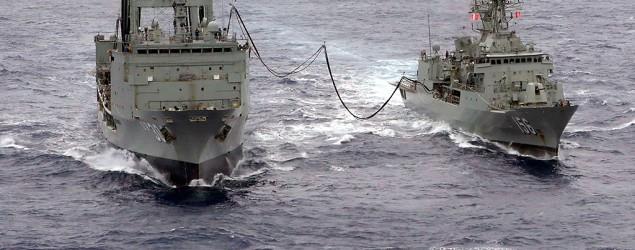April 8, 2014
SYDNEY/PERTH: A robotic search vehicle is likely to be sent deep into the Indian Ocean on Tuesday to look for wreckage of a missing Malaysian jetliner on the sea floor, as officials say the chance of finding anything on the surface has dwindled.

April 8, 2014
SYDNEY/PERTH: A robotic search vehicle is likely to be sent deep into the Indian Ocean on Tuesday to look for wreckage of a missing Malaysian jetliner on the sea floor, as officials say the chance of finding anything on the surface has dwindled.

An Australian ship that picked up signals consistent with the beacons from aircraft black box recorders over the weekend had not registered any further pulses.
Angus Houston, head of the Australian agency coordinating the search for Malaysia Airlines Flight MH370, said the month-long hunt was at a critical stage given the black box recorder batteries were dying — or had died.
An Australian ship that picked up signals consistent with the beacons from aircraft black box recorders over the weekend had not registered any further pulses, Houston said.
"The locator beacon has a shelf life of 30 days and we are now passed that time and as a consequence there is a chance that the locator beacon is about to cease transmission, or has ceased transmission," Houston told Australian Broadcasting Corp radio.
"It's all very finely balanced and I think it's absolutely imperative to find something else."
Houston said the chance of finding anything on the surface was greatly diminished due to strong currents and a cyclone that had passed through the area in the past week.
The black boxes record cockpit data and may provide answers about what happened to the plane, which was carrying 227 passengers and 12 crew when it vanished on March 8 and flew thousands of kilometres off its Kuala Lumpur-to-Beijing route.
Authorities have not ruled out mechanical problems as a cause of the plane's disappearance but say evidence, including loss of communications, suggests it was deliberately diverted.
A US Navy "towed pinger locator", which has been trawling an area some 1,680 km (1,040 miles) northwest of Perth, picked up two "ping" signal detections over the weekend – the first for more than two hours and the second for about 13 minutes.
Houston said the Australian ship Ocean Shield was still pulling the pinger locator in an effort to regain contact but would likely move quickly to remove that equipment and instead send down an autonomous underwater vehicle (AUV) named Bluefin-21.
Courtesy: Reuters







































































































